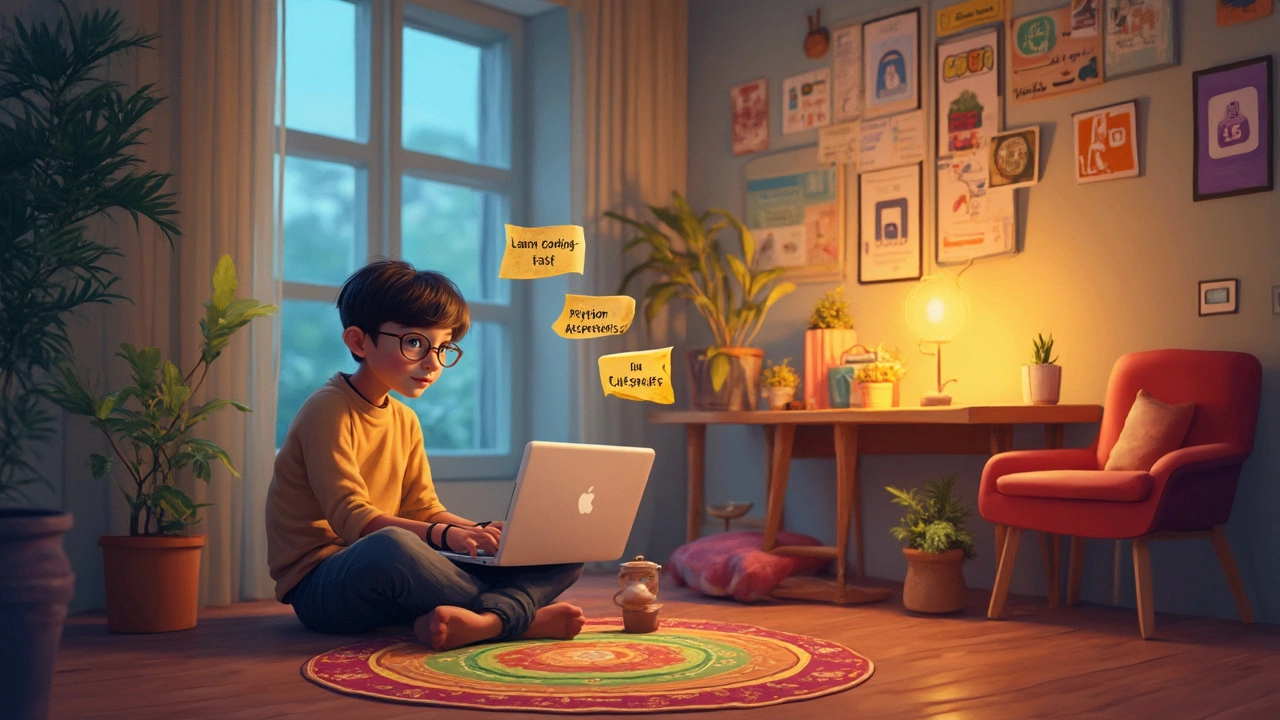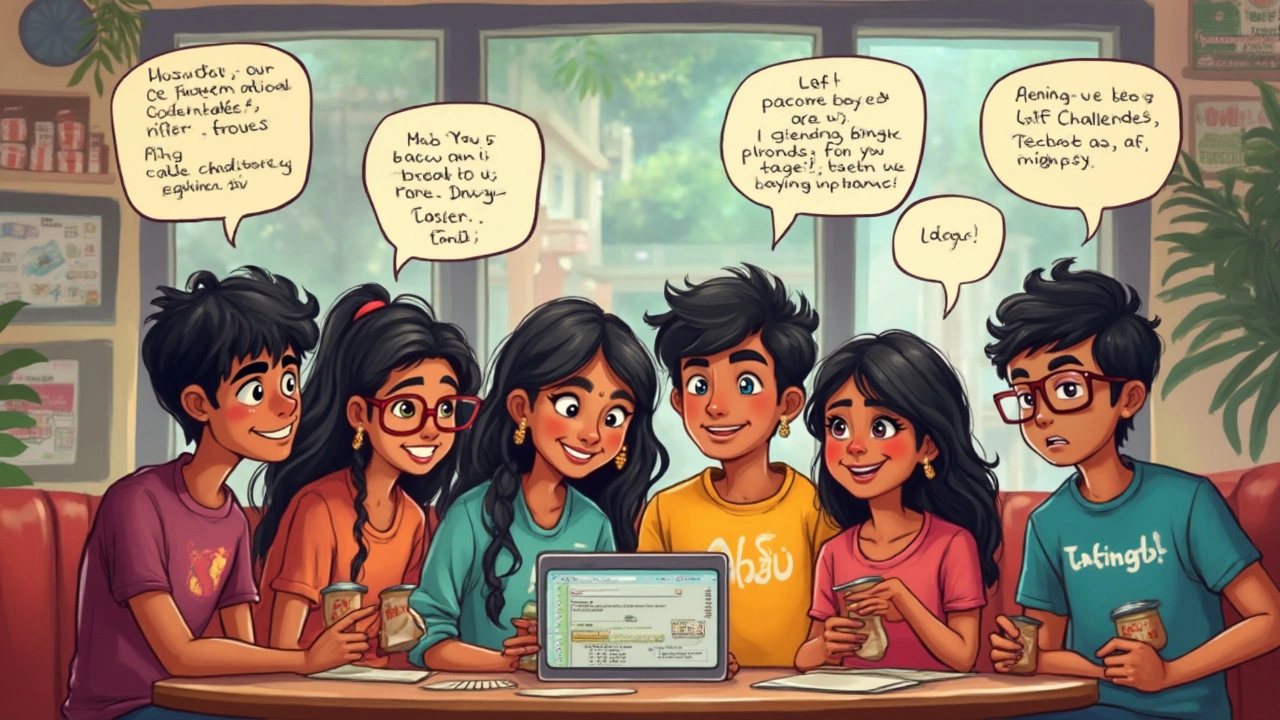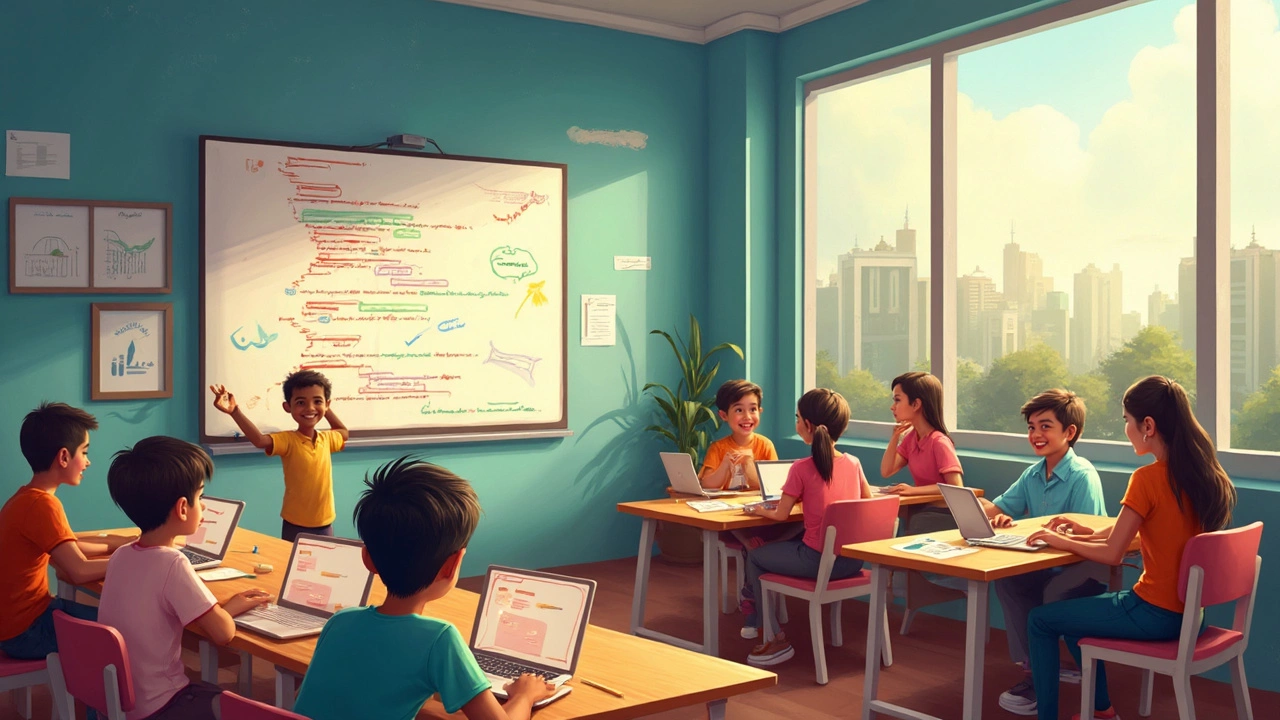Ever felt overwhelmed just reading about code? You're not alone. The good news: some coding languages are way friendlier than others, and picking the right one can save you a whole lot of frustration.
Most people don’t realize that you don’t need a computer science degree or a math brain to get started. The trick is choosing a language that’s designed to be simple—both to read and to write. That’s where beginner-friendly languages come in. They’re built for new learners, which means you’ll spend more time creating and less time scratching your head over weird symbols or rules.
Want a head start? Languages like Python are popular because their code looks almost like everyday English. You’ll find yourself typing out instructions that actually make sense on the first try. Plus, the community is huge, so there’s always someone who’s had the same question as you.
- Why Start Simple: The Value of Beginner Languages
- Python: The Go-To Easy Language
- Other Beginner-Friendly Options
- How to Pick What’s Right for You
- Tips to Make Learning Smoother
Why Start Simple: The Value of Beginner Languages
If you pick the hardest language first, you’re not doing yourself any favors. Beginner-friendly coding options are here for a reason: they let you actually enjoy learning while building cool stuff, without stressing out over confusing syntax or hidden rules.
The entire tech industry knows this: Python, for example, is almost always the starter language taught in college classes and coding bootcamps. Why? Because it drops a lot of the boring or complicated bits other coding languages focus on, like curly brackets or having to declare variables over and over. With Python, you see results fast. The code reads like English and you can get a simple program running within minutes, even if it’s your first time.
Other easy languages lean into this approach, too. Take Scratch—kids use it to learn the basics by dragging and dropping colorful blocks, which makes the logic clear without any of the scary typing. These accessible languages aren’t just for the youngest students either. Adults, career changers, and self-taught developers all start with something simple because it works.
Here’s what makes a language truly beginner-friendly:
- Clear and human-readable code (so you actually know what’s happening)
- Lots of free resources, tutorials, and an active community for support
- Quick setup and easy tools to test your code
- No need to manage tricky details like memory or computer internals
If your first experience is positive, you’re more likely to stick with it. So, starting with the simplest coding language isn’t just smart, it’s proven: people who get quick wins early are more confident and creative later on.
Python: The Go-To Easy Language
Let’s get straight to it: if you ask ten seasoned developers, at least eight will say Python is the simplest coding language to learn for beginners. It’s famous for its straightforward syntax—meaning the code you write is almost like regular English. No weird curly brackets every other line, no semicolons tripping you up.
Python first showed up in the early 1990s and was specifically built to be easy to read and write. That’s why teachers use it for coding classes in schools and universities worldwide. Even folks at NASA use Python for various projects. You’re in good company when learning this one.
Here’s why Python is the top pick for new coders:
- Readable code: You won’t find yourself staring at cryptic symbols. Python code is clean, direct, and just makes sense.
- Endless support: If you’re stuck, chances are someone else has been too. Python’s community is massive, and forums like Stack Overflow are packed with answers.
- Versatile projects: Want to build a website, play with data, automate stuff, or make a game? Python can handle it all.
- Lowers the tech barrier: You don’t need fancy hardware—a basic laptop or even an old desktop can run Python just fine.
Just to give you a taste, here’s what the classic “Hello, World!” program looks like in Python:
print("Hello, World!")That’s it! Other languages? Much messier for the same thing.
If you like facts and numbers, check out how Python stacks up compared to other languages for beginners:
| Language | Average Learning Time (basic) | Common Use Cases | Popularity (2024 TIOBE Index) |
|---|---|---|---|
| Python | 2-3 months | Web, Data, Automation | 1st |
| JavaScript | 3-4 months | Web, Apps | 7th |
| Java | 4-6 months | Apps, Enterprise | 3rd |
| C++ | 6-12 months | Games, High-Performance Apps | 4th |
Python leads the pack for a reason. Beginners can make real projects within weeks, not months. It’s not just hype—real companies and schools use Python for day-to-day work and learning.

Other Beginner-Friendly Options
While Python often steals the spotlight, it’s not the only game in town. If you’re looking for the simplest coding to learn beyond Python, there are legit alternatives that are just as welcoming—sometimes even better for certain projects.
Simplest coding options also include languages like Scratch. Scratch is a drag-and-drop language made for kids, but honestly, grown-ups use it too when they want to nail down the basics without typing code at all. The colorful puzzle piece blocks make logic and structure clear without any tricky symbols or typos to catch you out. Schools love using Scratch for a reason—it keeps things visual and fun.
JavaScript is another solid pick, especially if you want to dip your toes in web stuff. Plenty of people start here to build interactive web pages and simple games. JavaScript is everywhere on the internet; try changing the text or background color of a web page with just a single line. Plus, free beginner courses and tutorials are easy to find, and you can try things out right in your browser—no downloads needed.
If you’re into hardware, Arduino uses a simplified version of C++. It’s hands-on and straight to the point, perfect if you like seeing lights blink or motors spin. Tons of beginners get their first taste of physical coding this way, and guides for Arduino projects are everywhere.
Lastly, Ruby deserves a shout-out. It reads like plain English and is super forgiving. People who’ve never coded before often find Ruby gentle and even kind of fun. If you want to jump into building basic web apps without hurdles, Ruby should be on your radar.
Each of these options has big, friendly communities. That means if you get stuck, someone’s probably faced the same hiccup and can help out. Picking any of these languages will land you in good company, no matter your background.
How to Pick What’s Right for You
The trickiest part of starting out is deciding where to spend your energy. With so many choices, how do you know you aren’t wasting your time?
First, think about what you actually want to do. Are you hoping to build websites, automate your work, make games, or land an entry-level tech job? Your goal shapes your best choice. Want to create websites? JavaScript is the backbone of the internet. Interested in data, automation, or even small games? Python is the easiest way in. If you’re eyeing mobile apps, you might want to look into Swift (for iOS) or Kotlin (for Android), though they're a tiny bit more challenging than Python.
- Simplest coding usually means the language does the "heavy lifting" for you. Python, for example, doesn’t make you worry about clunky punctuation or complex setup.
- Check out what’s popular among beginners. Python tops lists for its simple style and giant support network. JavaScript is right behind, and it’s everywhere online.
- Think about job trends. According to Stack Overflow’s 2024 developer survey, Python and JavaScript are two of the most wanted skills for new coders.
- Look at the resources out there. Tons of free tutorials, YouTube videos, and beginner projects can make your path smoother and way less lonely.
Don’t worry about getting it perfect on the first try. You can always pivot later. The skills you pick up—like problem-solving and logic—carry over to any language. Still stuck? Ask yourself, "What would I be excited to build if I could code right now?" That usually points you in the right direction faster than any online quiz.

Tips to Make Learning Smoother
Learning to code isn’t a solo battle—there are smart shortcuts and tools that make things way easier. The trick is figuring out what really works, not just what sounds trendy.
- Simplest coding language? Stick with what has lots of resources. Python, for example, gives you free tutorials, helpful forums, and instant results when you run your code. Don’t try to reinvent the wheel; use what’s out there.
- Set up clear, small goals. Don’t start by planning to build a whole app. Try making a simple calculator or a guessing game first. That way you actually finish projects and stay motivated.
- Join online coding communities like Stack Overflow or Reddit’s r/learnprogramming. When you get stuck (and you will!), you’ll find quick answers or just reassurance that your problem isn’t weird at all.
- Mix it up. Use free resources like Codecademy, SoloLearn, or Khan Academy. They break things down into easy steps and keep things fun. Coding every day—even just 20 minutes—works better than cramming once a week.
- Don’t skip the habit of reading error messages. Sounds boring, but that’s how you figure out what went wrong. Half of coding is breaking things, and the other half is fixing them.
Check out this quick reality check on how most beginners learn to code and where they get stuck:
| Step | Common Struggle | What Helps |
|---|---|---|
| Installing Tools | Confusing setup | Use all-in-one platforms like Replit or Trinket |
| Writing First Code | Syntax errors | Copy/paste working examples, adjust slowly |
| Projects | Getting stuck mid-project | Follow step-by-step tutorials, then tweak one thing at a time |
| Staying Motivated | Losing interest | Share projects with friends, celebrate small wins |
Here’s the bottom line: Consistency beats intensity. Tiny amounts of steady practice add up, and mistakes are honestly part of the process.
